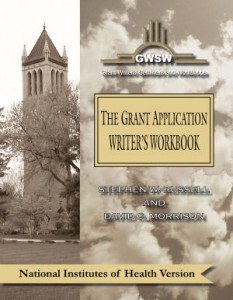Young/junior/early career investigators attending one of our Write Winning Grant Proposals seminars frequently ask whether teaming up with senior/established investigators on a grant application will increase their chances of meriting an independent grant award. The answer is that it may or may not be helpful, depending upon why and how a senior investigator is included as a collaborator.
The only justifiable reason for including a collaborator on a grant proposal – irrespective of career stage – is to provide expertise that the principal investigator (PI) lacks and yet is necessary to successfully carry out the proposed research. Thus, if a senior investigator brings experience to the proposed project that complements the skills of the junior investigator, then their inclusion in a meaningful role can certainly elevate a young investigator’s chances of success. However, if the early career PI adds a well-known, senior investigator to a grant proposal as “window dressing” to evoke a favorable response from reviewers, such a strategy is likely to backfire with reviewers who see it as an attempt by the junior investigator to exploit someone else’s success. Similarly, if a senior investigator on the team is the early career investigator’s previous graduate or postdoctoral mentor, such a partnership is likely to be viewed negatively by reviewers due to concerns about the young investigator’s ability to establish their research independence while still being closely associated with their past mentor.
The NIH defines an early stage investigator (ESI) as a Program Director/Principal Investigator (PD/PI) who 1) is within 10 years of completing their terminal research degree (e.g., PhD, PharmD, DSci, EdD, etc.) or post-graduate clinical training; and 2) has not previously competed successfully as a PD/PI for an independent R01 or equivalent NIH grant award. The goal for the recently announced NIH “Policy Supporting the Next Generation Researchers Initiative (NOT-OD-17-101),” is to fund approximately 200 more ESI awards in 2017 than were funded in FY 2016. To accomplish this, R01-equivalent applications from ESI PD/PIs will be flagged as ESI status at the time of proposal submission and placed in a separate pool for special consideration/prioritization during the peer review and funding process.
Importantly, for an R01-equivalent grant application with more than one PD/PI – i.e., multiple PIs – to be prioritized for funding, all PD/PIs must have ESI status. If any PD/PI of a multiple-PI R01-equivalent grant application is an established investigator, defined as an individual who has competed successfully as a PD/PI for an R01 or equivalent award, then that application will neither benefit from clustering of review during the study section meeting nor qualify for ESI funding prioritization at the Institute or Center level. Thus, it is critical for an ESI PD/PI to carefully consider these factors when assigning a project role to an established investigator. Given the above considerations, an ESI will often be better served by assigning an established investigator a project role of co-investigator, rather than a multiple PI, in order to reap the benefits of ESI status.
On a related note, the aforementioned Next Generation Researchers policy also introduces the early established investigator (EEI), previously referred to as mid-career investigator, as a new class of early career investigator with the goal of helping to stabilize the career trajectory of biomedical and behavioral researchers. The intent is to fund 200 more EEIs across the NIH in FY 2017 than in FY 2016. An NIH EEI is a PD/PI who is within 10 years of receiving their first substantial, independent competing NIH R01-equivalent research award as an ESI. Meritorious applications from EEIs will be prioritized for funding if 1) the EEI has lost all NIH research support or is at risk for losing all NIH research support if not funded by competing awards this year; or 2) the EEI is supported by only one active award. Similar to ESI proposals, an NIH grant application with more than one PD/PI will be prioritized for funding only if all multiple PIs have EEI status and meet prioritization criteria.
The bottom line for young investigators is that inclusion of a senior investigator as a collaborator on a grant application will likely be considered a strength by reviewers provided the individual is not a previous mentor and their expertise is viewed as being truly necessary to complete the proposed research. With respect to assigning a project role to an established investigator, junior investigators will want to be strategic so as not to be excluded from any young investigator benefits that are offered by the funding agency.

